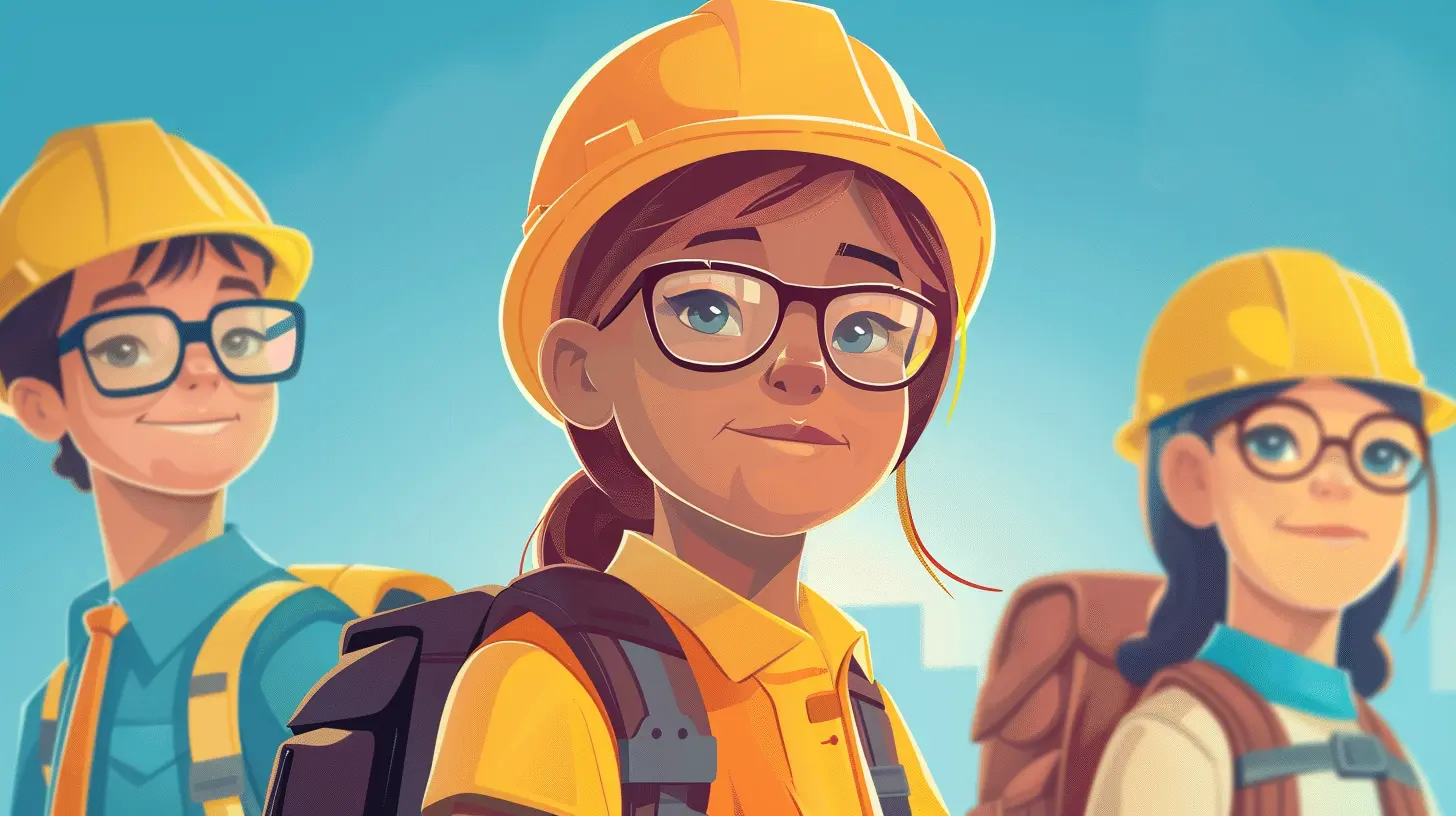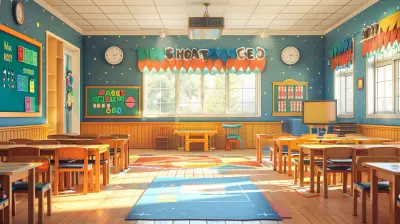Empowering Students Through Safety Education Programs
15 July 2025
In today’s fast-paced and ever-changing world, safety isn't just a nice-to-have—it's a must. And where better to start than with our future leaders? Yep, we’re talking about students. Empowering students through safety education programs isn't just about teaching them rules or warning them about "stranger danger." It's about giving them the tools to think critically, act responsibly, and stay safe—physically, emotionally, and digitally.
Let’s face it: the world isn’t as simple as it used to be. With social media, online threats, mental health challenges, and even physical risks at schools, a well-rounded safety education isn’t optional anymore. It’s essential. So grab a cup of coffee (or maybe a notebook if you’re taking notes), and let’s dive into how we can really empower students through safety education that works.
Why Safety Education Matters More Than Ever
A World Full of Risks
Think about your average school day now compared to what it was like 20 years ago. Students face a wider range of challenges—from bullying (both in-person and online) to emergency situations like natural disasters and even school violence. Add in mental health, substance abuse, and cyber threats, and it's clear: kids today are navigating a minefield.And here’s the thing: You can’t bubble-wrap them forever. But you can teach them how to spot risks and handle them the right way.
Knowledge Is Power
When students understand the "why" behind safety rules, they’re more likely to follow them. Instead of just barking rules at them, safety education explains the reasoning. That kind of knowledge puts the power right into their hands. It’s like giving them a toolbox for life.
What Is a Safety Education Program?
Before we get too ahead of ourselves, let’s break it down. A safety education program is a structured set of lessons or initiatives designed to teach students how to stay safe in various environments—whether it’s at school, at home, online, or out in the community.These programs can cover a massive range of topics like:
- Physical safety (think fire drills and road safety)
- Digital safety (how to avoid online scams or cyberbullying)
- Mental and emotional well-being (how to manage stress or seek help)
- Emergency preparedness (knowing what to do in a crisis)
- Conflict resolution and communication skills
It’s not just about prevention—it’s also about preparation and response.
The Core Elements of an Effective Safety Program
1. Age-Appropriate Content
A safety lesson for a kindergartener should look very different from one for a high school senior, right? The best programs are tailored to a student’s developmental level. Younger students might need simple role-playing games or songs, while older students benefit from scenario-based discussions and real-life examples.2. Interactive and Hands-On Learning
Let’s be honest—no one wants to sit through a boring lecture, especially kids. Great safety programs are interactive. Think role-playing, group discussions, simulations, and even gamified learning. The more students actively engage, the more they’ll remember and apply what they’ve learned.3. Consistent Reinforcement
One-and-done doesn’t cut it. Safety education should be woven throughout the school year—not just packed into one week. Posters, reminders, follow-up activities, and even parent engagement help keep safety top of mind.4. Real-World Application
Students should walk away with practical skills they can use. Whether it’s how to report suspicious behavior, where to go in an emergency, or what to do if someone’s being bullied, the skills need to transfer to real life.
How Safety Education Builds Confidence and Independence
Here’s a little secret most people don’t realize: Safety education isn’t just about avoiding danger—it builds confidence.When students know how to handle tough situations, they trust themselves more. They become more independent, resilient, and comfortable taking on challenges. It's like handing them a road map for those moments when no adult is around to guide them.
And you know what? That kind of empowerment spills over into other parts of their lives—academics, relationships, future careers. Confidence is contagious.
Popular Safety Topics Every School Should Cover
Let’s take a quick look at some of the key areas every solid safety program should dive into:1. Online Safety
Let’s cut to the chase: the internet is a jungle. Between cyberbullying, phishing scams, identity theft, and digital addiction, students need guardrails.Teach them how to create strong passwords, identify sketchy websites, protect their privacy, and interact respectfully online. Social media literacy is a must—especially when one post can change your future in a heartbeat.
2. Bullying and Peer Pressure
Whether it’s on the playground or in a group chat, bullying is a real issue. Safety programs should teach students how to recognize it, stand up for themselves and others, and report it when needed.And when it comes to peer pressure? Students need to know how to say “no” with confidence without feeling like the odd one out.
3. Mental Health Awareness
You can’t talk about safety without talking about mental health. High stress, anxiety, social isolation—these are real threats to student wellbeing.Programs that promote emotional intelligence, stress management techniques, and accessing mental health resources can actually save lives. Plus, they create a culture where it’s okay to not be okay.
4. Physical Safety and Emergency Preparedness
From fire drills to earthquake protocols, physical safety training is still vital. Students need to know what to do when something goes wrong. Practicing those drills helps reduce panic and ensures faster, safer responses.Don’t forget personal safety too—like road safety, dealing with strangers, or knowing basic first aid.
Involving Parents and Teachers in the Safety Conversation
Okay, so we’ve talked a lot about the students, but what about the adults in the room?Teachers as Role Models
Teachers are often the first responders in a school emergency and the daily monitors of student behavior. When they model safe practices and take part in safety education, it reinforces the message.Plus, if they’re trained in identifying early warning signs—like changes in student behavior—they can step in before things escalate.
Parents as Partners
Safety doesn’t stop at the classroom door. Parents need to be in the loop. Whether it’s through newsletters, parent-teacher meetings, or at-home activities, involving families ensures the safety message is consistent across environments.And let’s be real—kids are more likely to follow through when they hear the same thing from both their teacher and their parent.
Success Stories: Real-Life Impact of Safety Programs
Still not convinced? Let’s take a peek at some real-world results.- School A introduced a digital citizenship program. Online bullying incidents dropped by 45% in one semester.
- Elementary School B implemented a conflict resolution curriculum. Student fights decreased, and suspensions were cut in half.
- High School C ran a mental wellness campaign and saw a significant uptick in students accessing the school counselor—students who wouldn’t have sought help otherwise.
That’s not fluff. That’s the magic of good safety education in action.
Challenges and How to Overcome Them
Of course, no program is perfect. Schools often deal with budget constraints, lack of training, or resistance to change. So how can we overcome these?Find Affordable Resources
There are tons of free or low-cost safety education materials out there from nonprofits, government websites, and online platforms.Offer Teacher Training
Investing in professional development ensures teachers feel confident delivering safety content. A well-equipped teacher is a game-changer.Create a Culture of Safety
Safety works best when it becomes part of the school culture. That means everyone—students, staff, and parents—buys in and plays their part.The Bottom Line
Empowering students through safety education programs is about more than setting rules. It's about changing lives. When students are equipped with the knowledge, tools, and confidence to stay safe, they’re ready to thrive—not just in school, but far beyond it.So let’s stop thinking of safety education as an obligation and start seeing it as an opportunity—to shape stronger, smarter, more self-aware individuals who aren’t just surviving but actually thriving.
Because at the end of the day, isn’t that what education is all about?
all images in this post were generated using AI tools
Category:
School SafetyAuthor:

Bethany Hudson
Discussion
rate this article
1 comments
Valeris Clarke
This article highlights the crucial role of safety education programs in empowering students. By equipping them with essential skills and knowledge, these initiatives foster a sense of security and confidence, enabling students to navigate challenges and contribute positively to their communities. Great insights!
August 6, 2025 at 11:29 AM

Bethany Hudson
Thank you for your thoughtful response! I'm glad you found the insights on safety education programs empowering. Your support reinforces their importance in fostering confident and capable students.


